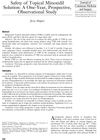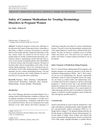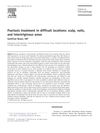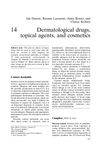Safety of Dermatologic Medications in Pregnancy and Lactation
March 2014
in “
Journal of The American Academy of Dermatology
”
topical corticosteroids topical calcineurin inhibitors coal tar methotrexate systemic retinoids cyclosporine TNF-alpha inhibitors etanercept VATER syndrome infliximab adalimumab ustekinumab phototherapy psoralen plus ultraviolet A light therapy mycophenolate mofetil rituximab first-generation antihistamines systemic antipruritics topical retinoids steroids Protopic Elidel Neoral Enbrel Remicade Humira Stelara PUVA CellCept Rituxan antihistamines retinoids
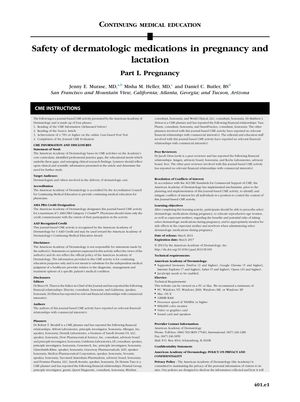
TLDR Some skin medications are safe during pregnancy and breastfeeding, but others can harm the baby and should be avoided.
The document from March 2014 provides a comprehensive review of the safety of dermatologic medications during pregnancy and lactation. It categorizes medications based on international classification systems and discusses the risks associated with specific drugs. Topical corticosteroids are generally safe, but potent ones may cause fetal growth restriction in the third trimester. Topical calcineurin inhibitors and coal tar are considered relatively safe, while methotrexate and systemic retinoids are contraindicated due to known teratogenic effects. Cyclosporine is not teratogenic but is linked to low birth weight and prematurity. TNF-alpha inhibitors, such as etanercept, may be used with caution in severe cases, although there are concerns about VATER syndrome and spontaneous abortions. Infants exposed to infliximab should avoid live vaccines for six months. The safety of adalimumab and ustekinumab is unclear due to limited data. Phototherapy is generally safe, except for psoralen plus ultraviolet A light therapy. Certain medications, like mycophenolate mofetil and rituximab, are advised against due to risks of congenital malformations and hematologic abnormalities. First-generation antihistamines are considered safe, while systemic antipruritics should be used with caution. Cosmetic therapies and topical retinoids are not recommended due to limited safety data. The document underscores the need for careful evaluation of dermatologic treatments during pregnancy and lactation to minimize fetal harm.

